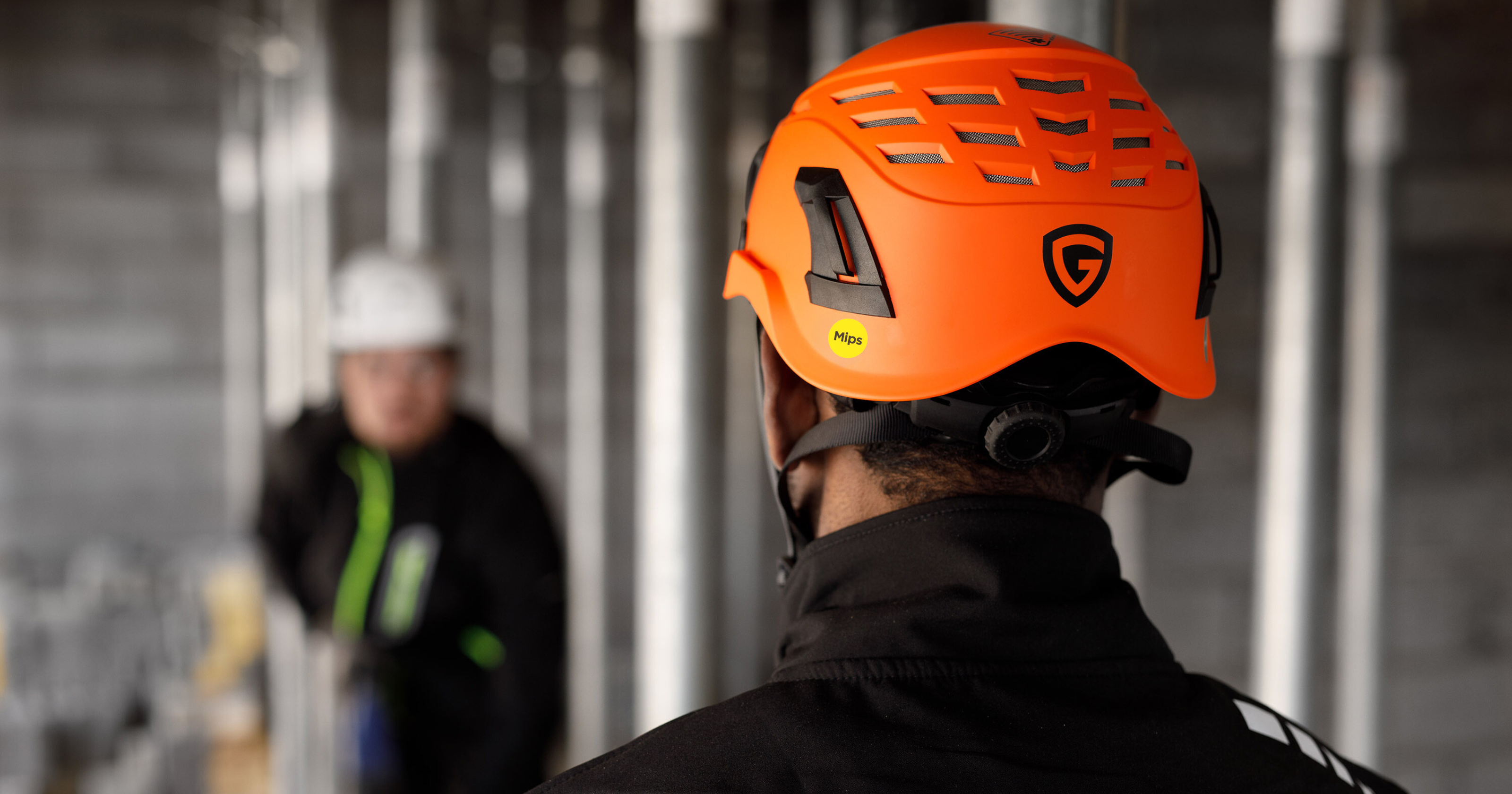
MIPS - Safety for helmets
Historically, helmets have been designed to protect against straight impacts, with the primary purpose of protecting against skull fractures. However, oblique impacts are a more common accident, yet current regulatory certification standards do not address this type of injury risk despite the fact that the human brain is more sensitive to rotational movements that occur in oblique impacts compared to straight impacts.

How does MIPS work?
The Mips® safety system is designed to provide protection in helmets against so-called rotational motion.
Rotational motion is a combination of rotational energy (angular velocity) and rotational force (angular acceleration). This rotational motion results in shearing and/or stretching of brain tissue, which affects the brain and can lead to serious brain damage such as concussion and hemorrhage.

ANGLED IMPACTS
Traditional helmets are designed and tested primarily for straight impacts, but most impacts are angled which can cause rotation of the head. The EN397 standard currently has no tests for rotation.

SENSITIVE BRAIN
Research has shown that the brain is particularly sensitive to angled impacts, which can result in long-term brain damage that is difficult to recover from.

ROTATION PROTECTION
The MIPS low friction protection in the Guardio helmets is designed to reduce the rotation of the head during certain angled impacts and thus reduce the risk of brain injury.

Leaders in the industry
The development of the MIPS low-friction layer is based on many years of studies of the biomechanical properties of the human brain. Research and development has been ongoing for over 25 years and has taken place together with KI and KTH. Countless tests have been conducted to ensure and further develop the innovation. As recently as October 2019, the Polhelm Prize was awarded to the researchers who helped develop the MIPS safety solution.